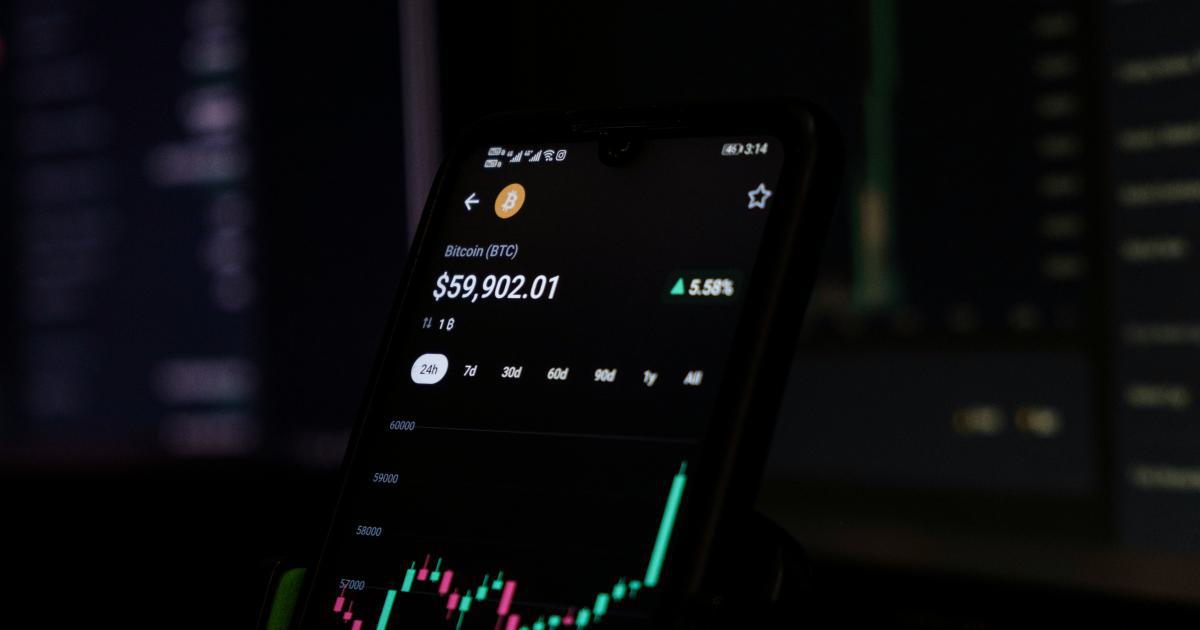How Effective Are Stop Loss Orders In Trading?

Stop loss orders in trading are a cornerstone for risk management in today's volatile financial markets. Traders routinely depend on these orders to automatically exit losing positions, limit potential losses, and secure profits when market conditions change unexpectedly. In an environment where every second counts, understanding the mechanisms, advantages, and potential pitfalls associated with stop loss orders in trading is crucial for both beginner and advanced traders. This article delves deep into the intricacies of stop loss orders in trading, exploring topics such as their technical operation, real-world successes and failures, best practices for setting them, and common strategic pitfalls that traders may face. By integrating technical analysis with risk and money management strategies, stop loss orders have become an essential tool for those aiming to manage unpredictable market swings.
Understanding Stop Loss Orders in Trading
Stop loss orders are instructions placed with a broker to buy or sell a security when it reaches a particular price, providing an automated exit strategy to protect against significant losses. The core idea is simple yet powerful: define the exit point to avoid waiting too long to act amid rapid market downturns. With volatile markets and sudden price movements, a stop loss order can serve as a safety net, ensuring that emotions and delays do not exacerbate losses.
The Mechanics Behind Stop Loss Orders
At its most basic level, a stop loss order is triggered when the price of an asset reaches a predetermined level. For a trader holding a long position, the stop loss order is placed below the entry price to limit losses if the market turns bearish. Conversely, for a short position, it is placed above the entry point to safeguard against unexpected upward movements. When triggered, the order becomes a market order, executing at the best available price, though sometimes this can lead to slippage during high volatility periods.
Stop loss orders come mainly in two flavors: standard stop loss orders and trailing stop orders. A standard stop loss order remains fixed, while a trailing stop order automatically adjusts with favorable price movements. This trailing mechanism allows traders to protect gains by “trailing” the price at a set percentage or dollar amount as it moves in the favorable direction. However, it’s important to be aware that in a fast-moving market, even trailing stops may not fully protect against large gaps or extreme volatility.
To illustrate, consider a trader who enters a long position at $100. The trader sets a standard stop loss at $95 to limit any potential loss, ensuring that if the price falls to $95, the position is automatically liquidated. Alternatively, a trailing stop could be set at 5% below the current price, dynamically adjusting upward as the price rises, offering a balanced blend of loss protection and capturing profits.
Employing these different types of stop loss orders effectively requires an understanding of market conditions. For instance, in a choppy market with frequent price fluctuations, a fixed stop loss might trigger prematurely, causing the trader to exit a potentially profitable position. On the other hand, in trending markets, a trailing stop order can capture more upside while still protecting against major downswings.

Benefits of Using Stop Loss Orders
Stop loss orders serve as crucial tools for risk management and disciplined trading. The benefits extend from their simplicity to their effectiveness in executing pre-defined strategies without constant market monitoring.
Mitigating Emotional Trading
One of the primary advantages of using stop loss orders is their help in removing emotions from the trading equation. Emotional decision-making can lead to overtrading, panic selling, or holding onto losing positions in the hope of a reversal. Stop loss orders enforce discipline by triggering a sell when the specified price is reached, regardless of the trader's emotional state at that moment. Knowing that measures are in place to protect capital offers peace of mind and allows traders to focus on strategy rather than reacting impulsively.
Automatic Position Management
Another advantage is that stop loss orders function autonomously, allowing traders to manage positions even when they are not actively monitoring the market. This automation means that even during intense market hours or unforeseen events, orders are executed promptly, often saving traders from major losses. This feature is particularly valuable for individuals who cannot constantly watch price charts or for those trading on international markets across different time zones.
Capital Preservation
In trading, preserving capital is as important as making profits. Stop loss orders play a key role in risk management by limiting potential losses on an individual trade. When losses are tightly controlled, traders are better able to remain in the game for the long haul. This preservation of capital means that even if a trader experiences multiple losses, these losses will be contained within manageable levels, allowing them to maintain sufficient liquidity for subsequent opportunities.
Enhanced Trading Discipline and Strategy Execution
Stop loss orders compel traders to think about risk before entering a trade. By determining the maximum acceptable loss beforehand, traders can set realistic exit strategies and stick to them. This pre-planning helps in establishing clear rules for each trade, contributing to a disciplined trading strategy. Moreover, by integrating stop loss orders into their trading plans, traders can assess trade risk-to-reward ratios more meticulously and adjust their positions accordingly.
Integrating Stop Losses into Overall Trading Strategy
A holistic trading strategy isn’t just about identifying market opportunities but also about safeguarding against unforeseen risks. Stop loss orders assist in integrating risk management within every trade, ensuring that even if an overall strategy doesn’t yield the expected returns, individual losses remain contained. The resulting risk-adjusted performance is often more robust over the long term, as losses are minimized and stable capital allocation principles are maintained.
The benefits of stop loss orders, from automating risk management to ensuring emotional discipline, make them indispensable to a successful trading strategy. However, while there are many advantages, it's important for traders to understand their limitations and adjust their strategies according to market volatility and other external factors.
Limitations and Risks of Stop Loss Orders
While stop loss orders offer many benefits, they are not without challenges. Being aware of their limitations is crucial for any trader incorporating them into a broader strategy.
Market Volatility and Slippage
One of the significant downsides is the risk of slippage during periods of high market volatility. When a stop loss order is triggered, it turns into a market order, and during volatile times, the execution price can differ from the expected price. This phenomenon, known as slippage, may result in losses larger than anticipated. For example, during sudden market downturns or flash crashes, the price might gap below the stop loss threshold before the order is executed, which can result in a sale at a much lower price than expected.
False Breakouts
Another challenge faced by stop loss orders arises in the form of false breakouts. In a choppy market, the price may briefly move past the stop loss level only to rebound quickly, causing an exit from a position that might have recovered. Such scenarios can be particularly detrimental for long-term traders, as being prematurely whipsawed out of an investment may lead to missed opportunities for recovery and profit.
Over-Reliance and Rigid Strategies
Traders can sometimes become overly reliant on stop loss orders, treating them as a guaranteed safety net rather than a component of a broader risk management strategy. This mindset may prevent traders from adjusting to changing market conditions or considering manual intervention when necessary. Additionally, if stop loss levels are set too close to the current price, normal market fluctuations can trigger an exit unnecessarily, leading to frequent and potentially avoidable trading losses.
Limitations in Illiquid Markets
In markets with low liquidity, stop loss orders may lead to erratic results due to insufficient buying or selling interest at the desired price points. Illiquid markets tend to have wider spreads and lower trading volumes, meaning that a triggered stop loss order might execute at a price that is far from the intended level. Such situations highlight the importance of considering market conditions and liquidity when setting stop loss parameters.
The Psychological Impact of Frequent Trading
The regular triggering of stop loss orders can also have a psychological impact on traders. Frequent exits, even when they are based on carefully calculated risk levels, can lead to self-doubt and a lack of confidence in one's trading strategy. It might prompt some traders to adjust their strategies impulsively, potentially increasing overall risk exposure. Therefore, successful trading involves not only the mechanical implementation of stop loss orders but also the mental resilience to trust one’s strategy over the noise of market swings.
Dealing with these limitations often requires a nuanced approach. Experienced traders might combine stop loss orders with other risk management tools like position sizing, diversification, and real-time monitoring of market sentiment. Adapting stop loss methods—such as utilizing trailing stops during certain market conditions or considering wider stop loss ranges in volatile markets—can help in mitigating many of the common pitfalls associated with their use.

Best Practices for Implementing Stop Loss Orders
To maximize the effectiveness of stop loss orders, traders must tailor them to their individual circumstances and market conditions. Below are several best practices and actionable steps to incorporate stop loss orders effectively into a trading strategy.
1. Define Clear Risk Tolerance
Before entering a trade, determine the maximum acceptable loss for that trade. This involves a thorough analysis of account size, risk-reward ratios, and overall financial goals. Defining clear risk tolerance is crucial for setting stop loss levels that reflect realistic market conditions and personal risk appetite. Traders should also consider the volatility of the asset and adjust the stop loss distance accordingly.
2. Use Technical Analysis
Incorporate technical analysis to identify logical support and resistance levels when setting stop loss orders. Placing stop losses just beyond key support or resistance points can minimize the chances of being stopped out by mere market noise. However, overly tight stops can lead to premature exits, while excessively wide stops might expose the account to unnecessary risk. Balancing these factors is essential for effective risk management.
3. Consider Volatility-Based Stops
Volatility-based stops adjust the stop loss distance based on recent price fluctuations. Tools such as the Average True Range (ATR) can help in determining the appropriate stop loss level. For instance, a trader might use a multiple of the ATR to set a stop that accounts for daily price variability, thereby reducing the chances of a premature exit during normal volatility.
4. Regularly Review and Adjust Stop Levels
Market conditions change, and what was once an effective stop loss level might become outdated. Traders should periodically adjust their stop loss levels to reflect current market dynamics or changes in some underlying fundamentals. Automation tools integrated into trading platforms can assist in recalibrating stops, ensuring that risk management practices remain robust over time.
5. Integrate Stop Loss Orders with Position Sizing
The relationship between stop loss orders and position sizing is critical. A well-calculated stop loss should align with the overall exposure of the portfolio. For instance, if a trader is risking 2% of their account on a single trade, the stop loss distance and the size of the position must be calculated to ensure that, if triggered, only the predetermined amount is lost. This holistic approach to risk helps in managing the cumulative effect of multiple trades and contributes to long-term trading sustainability.
6. Utilize Automated Trading Systems
For those trading multiple positions simultaneously or those who prefer a systematic approach, automated trading systems that incorporate stop loss orders can be a boon. Such systems minimize the human error factor and ensure that all trades adhere strictly to the pre-set risk parameters. Automation can also help in backtesting various stop loss strategies under different market conditions, providing insights into optimizing the parameters for best outcomes.
7. Combine with Other Risk Management Techniques
Stop loss orders should not be the sole tool for risk management. Combining them with other techniques—such as diversification, hedging strategies, and the use of options—can create a more robust defense against unpredictable market shifts. A diversified approach ensures that the failure of one strategy does not jeopardize the overall portfolio.
By following these best practices, traders can significantly enhance the protective role that stop loss orders play in their trading strategies. The key is adapting the approach based on individual risk tolerance, market conditions, and continual assessment of trading performance.

Real-World Examples and Case Studies
To better understand the practical application and effectiveness of stop loss orders in trading, it is instructive to examine real-world scenarios where they have been used both successfully and, occasionally, unsuccessfully.
Case Study: The Flash Crash of 2010
During the infamous flash crash of May 6, 2010, many electronic trading systems experienced severe disruptions. For most traders, stop loss orders were instrumental in preventing catastrophic losses. In numerous instances, these orders were triggered as prices plummeted. However, the extreme volatility led to significant slippage, where the execution price was far worse than the set stop loss level. This case study underlines both the necessity of stop loss orders in protecting against long-term damage and the inherent risk that extreme conditions may compromise their expected performance.
Case Study: Trending Market Adaptation
Another illustrative case involves a trader during a strong bull market period. This trader entered a long position at a relatively low price by setting a trailing stop order at a 5% decline from the peak. As the market rose steadily, the trailing stop moved upward correspondingly, allowing the trader to capture significant profits while maintaining downside protection. When a sudden market correction occurred, the stop was triggered at a level that minimized losses compared to what a fixed stop would have incurred. This application of trailing stops exemplifies the adaptability and dynamic protection offered by well-implemented stop loss orders.
The Importance of Contextual Application
These examples highlight that the success of stop loss orders depends on the context in which they are used. In highly liquid and trending markets, stop loss orders, particularly those with a trailing mechanism, can enhance returns while limiting losses. Conversely, in highly volatile or illiquid markets, traders need to be mindful of the possibility of slippage and false breakouts. The key takeaway is that stop loss orders are most effective when integrated into a comprehensive trading strategy that considers market conditions, liquidity, and individual risk tolerance.
Lessons Learned and Best Practices from Case Studies
• Recognize that no singular strategy is foolproof.
• Adjust stop loss settings based on market behavior and liquidity.
• Combine stop loss orders with additional risk management tools to hedge against extreme events.
• Regular evaluation and strategy adjustments play a critical role in overall trading performance.
Integrating stop loss orders into a broader risk management framework allows traders to leverage technology and automation while remaining flexible enough to react to unpredictable market conditions.

Integrating Stop Loss Orders into a Comprehensive Trading Strategy
Stop loss orders, while integral, form just one part of a robust trading strategy. The holistic approach to trading involves blending stop loss orders with other technical indicators, market sentiment analysis, and diversification practices.
Diversification and Multi-Layered Risk Management
Effective trading strategies do not rely solely on stop loss orders. Traders should utilize diversification to ensure that adverse movements in a single asset do not devastate their entire portfolio. By diversifying across asset classes and sectors, traders can spread risk more evenly. Stop loss orders then act as an additional safety layer for each individual position, ensuring that losses remain controlled even when market conditions turn unfavorable.
Combining Technical and Fundamental Analysis
Stop loss orders offer a technical risk management tool, yet they must be complemented by solid fundamental analysis. Assessing economic indicators, corporate performance, and market trends can help set more realistic and well-calibrated stop loss levels. For instance, during earnings announcements or significant geopolitical events, a temporary widening of stop loss orders may prevent premature triggering due to short-term volatility. This balanced approach marries the benefits of technical precision with a deep understanding of market drivers.
Adjusting Strategies Through Continuous Monitoring
Markets evolve over time, and so should stop loss strategies. Successful traders frequently back-test historical data, simulate various scenarios, and make incremental adjustments to their stop loss strategies. Continuous monitoring allows traders to identify patterns where stop loss orders are consistently triggered due to market noise rather than genuine trend reversals. Over time, these insights inform adjustments that optimize the stop level for specific assets or market conditions, thereby making the strategy more resilient and effective.
Education and Adaptation in Modern Trading
The modern trading environment is dynamic, aided by advanced analytics and real-time data streams. Traders must stay updated with the latest technological tools that provide real-time analytics on price movements, volatility indicators, and momentum metrics. Learning from both successful trades and failures ensures that stop loss strategies can be fine-tuned for performance over the long term. Workshops, webinars, and continuous education play a significant role in helping traders remain adaptive and informed.
By integrating stop loss orders into a comprehensive strategy that leverages diversification, technical and fundamental analysis, and real-time adaptation, traders can elevate their overall risk management approach. The ultimate goal is not merely to prevent losses but to create a balanced system of safeguards that works harmoniously with the trader’s broader strategy.
Conclusion: Maximizing Effectiveness with Informed Strategy
Stop loss orders in trading are not a one-size-fits-all remedy, yet when implemented properly, they can be highly effective tools to manage risk and protect capital. Their utility lies in automating risk management, removing emotional biases from trading decisions, and ensuring a systematic approach to exiting losing positions. However, traders must be aware of the limitations, including potential slippage, false breakouts, and the hazards of setting stops too rigidly.
In essence, the best use of stop loss orders is as part of a broader, well-thought-out trading strategy. By combining them with sound technical analysis, diversification, conscious risk management practices, and ongoing strategy adjustments, traders can navigate volatile markets with more confidence and control. Whether you are a novice trader seeking initial risk management tools or an experienced market participant looking to fine-tune your strategy, understanding the nuances of stop loss orders in trading is a vital step toward sustained success.
As markets continue to evolve, so do trading strategies. Embracing technology, learning from real-world case studies, and adapting stop loss orders based on ever-changing market dynamics are essential for long-term profitability. Ultimately, a disciplined approach combined with continuous education forms the bedrock of a resilient trading strategy.
By learning from both past experiences and technical insights, traders can harness the power of stop loss orders to prevent catastrophic losses, maintain a stable portfolio, and capitalize on profitable opportunities while mitigating risk. Remember that no tool is infallible on its own; the synergy of multiple risk management techniques is what ultimately separates successful trading from impulsive, emotion-driven decision-making.
Whether navigating a turbulent market or capitalizing on a clear trend, stop loss orders remain an indispensable part of the modern trader’s toolkit. With thoughtful application, regular reassessment, and a commitment to risk awareness, traders can ensure that their journey in the financial markets is both secure and strategically sound.
Unlock Trading Potential with Automated Analysis
Tired of missing opportunities and making suboptimal trading decisions? TrendSpider's cutting-edge platform automates complex technical analysis, saving you time and reducing human error.
With multi-timeframe analysis, dynamic alerts, backtesting, and customizable charting, you'll gain a competitive edge in identifying trends and making informed trades across global markets.
Unleash the Power of Automated Trading Analysis
Are you struggling to keep up with the fast-paced trading world? TrendSpider empowers you with cutting-edge tools for optimal strategy execution.
Our automated technical analysis suite eliminates guesswork, backtests strategies, and delivers real-time alerts, saving you valuable time and effort.




